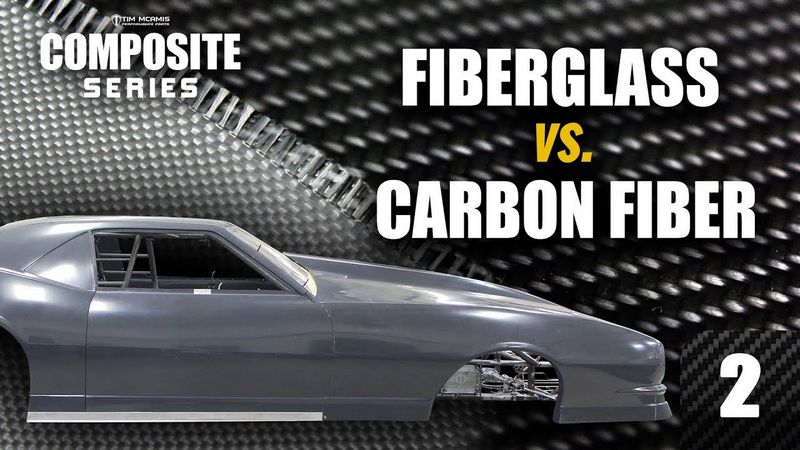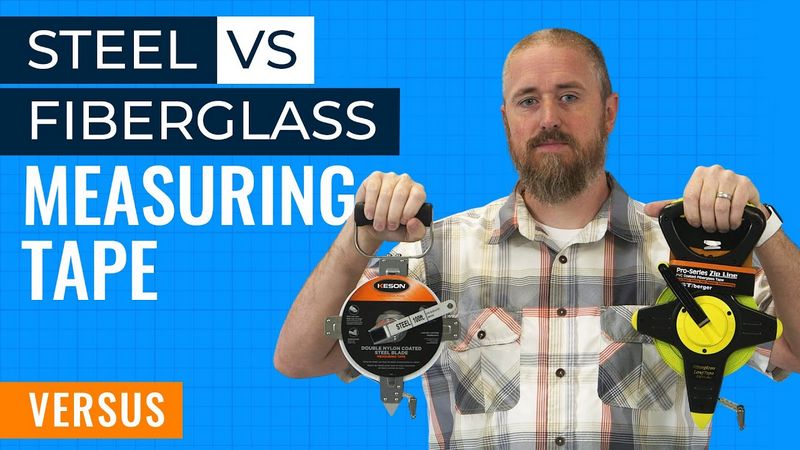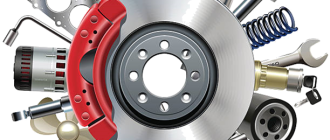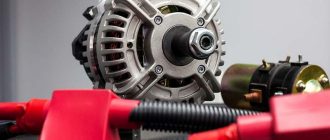
Fiberglass vs. Metal: Which is Better for Auto Body Repair?
When it comes to auto body repair, choosing the right material is essential for ensuring the longevity and quality of your vehicle. Two popular options to consider are fiberglass and metal. Each material has its own advantages and disadvantages, making it crucial to understand the differences before making a decision.
Fiberglass:
Fiberglass is a lightweight and durable material that is commonly used in auto body repair. It is made from layers of glass fibers and resin, resulting in a strong and flexible composite. One of the main benefits of fiberglass is its resistance to rust and corrosion, making it a great choice for vehicles exposed to harsh weather conditions. Additionally, fiberglass can be molded into intricate shapes, allowing for more design flexibility.
However, fiberglass does have some downsides. It can be more difficult to repair compared to metal, as special tools and techniques are required. Additionally, fiberglass is more susceptible to cracking and chipping, which can be costly to fix.
Metal:
Metal, on the other hand, is a traditional and widely used material in auto body repair. It offers excellent strength and durability, providing better protection in case of a collision. Metal can also be easily repaired, as there are many experienced technicians available who specialize in metalwork.
However, metal is prone to rust and corrosion, especially if the paint is scratched or damaged. Regular maintenance and protective coatings are necessary to prevent rust from spreading and causing further damage to the vehicle.
Which is better?
The choice between fiberglass and metal ultimately depends on your specific needs and preferences. If you prioritize rust resistance and design flexibility, fiberglass may be the better option for you. On the other hand, if durability and ease of repair are your main concerns, then metal is likely the better choice.
When making a decision, it is recommended to consult with a professional auto body repair shop. They will be able to assess the damage and provide expert advice on the best material for your specific repair needs.
Whether you choose fiberglass or metal, it is essential to choose a trusted and reputable auto body repair shop. Proper installation and repair techniques are crucial for ensuring the safety and longevity of your vehicle.
Remember, choosing the right material is just one step in the auto body repair process. Regular maintenance and proper care are also essential for keeping your vehicle in optimal condition.
Importance of Choosing the Right Material for Auto Body Repair
When it comes to repairing your auto body, choosing the right material is of utmost importance. The two most common materials used for auto body repair are metal and fiberglass.
Metal has long been a preferred choice for auto body repair due to its durability and strength. Metal is known for its ability to withstand harsh conditions and provide better protection for your vehicle. It has been the go-to material for many years, and for good reason.
However, fiberglass has gained popularity in recent years due to its lightweight and flexibility. Fiberglass is a composite material made of glass fibers and a polymer resin. It offers excellent resistance to corrosion and is easier to manipulate compared to metal.
So, which material is better for auto body repair, metal or fiberglass? The answer depends on various factors, such as the extent of the damage, the type of vehicle, and personal preference.
For minor dents or scratches, fiberglass can be a suitable option as it is easier to repair and provides a seamless finish. On the other hand, metal is ideal for major repairs or structural damage as it offers superior strength and protection.
Ultimately, the choice between metal and fiberglass for auto body repair depends on your specific needs and the advice of a professional. It is important to consult with an experienced auto body technician who can assess the damage and recommend the most appropriate material for your vehicle.
Remember, choosing the right material for your auto body repair can make a significant difference in the overall quality and longevity of the repair. So, take your time to consider all the factors and make an informed decision.
Fiberglass and Metal: The Two Main Options
When it comes to auto body repair, there are two main options to consider: fiberglass and metal. Each material has its own advantages and disadvantages, and choosing the right one can be critical to the outcome of your repair job.
Metal has been the traditional choice for auto body repairs for many years. It is strong, durable, and can be easily shaped and molded to fit the contours of your vehicle. Metal repairs are typically more cost-effective and can be done with standard tools and equipment.
On the other hand, fiberglass is a lightweight and flexible material that offers a number of benefits as well. It is resistant to corrosion and rust, which can be a major advantage for vehicles exposed to harsh weather conditions. Fiberglass repairs can also be more affordable and easier to work with in some cases.
So, which is better: metal or fiberglass? The answer depends on a variety of factors such as the extent of the damage, the type of vehicle, and personal preference. Some repairs may be better suited for metal, while others may benefit from the flexibility and corrosion resistance of fiberglass.
| Strength | Strong and durable | Lightweight and flexible |
| Cost | Typically more cost-effective | Can be more affordable |
| Corrosion Resistance | Prone to corrosion and rust | Resistant to corrosion and rust |
| Repair Difficulty | Easier with standard tools | Can be easier to work with |
In conclusion, both fiberglass and metal have their own unique advantages and disadvantages when it comes to auto body repair. It is important to carefully consider the specific needs of your vehicle and consult with a professional to determine which material is the best choice for your repair job.
Understanding Fiberglass
In the world of auto body repair, choosing between fiberglass and metal can be a tough decision. Both materials have their pros and cons, and it’s important to understand the differences before making a choice.
Fiberglass is a composite material made from a combination of glass fibers and resin. It is known for its strength and durability, making it an excellent choice for auto body repair. Fiberglass is lightweight, which can help improve fuel efficiency and overall performance. It is also resistant to corrosion and can withstand extreme temperatures, making it suitable for various weather conditions.
One of the main advantages of fiberglass is its versatility. It can be molded into various shapes and sizes, allowing for greater design flexibility. This means that auto body repair using fiberglass can result in a seamless and streamlined look.
However, fiberglass does have its drawbacks. It can be more expensive than metal, and the repair process may also be more complex. Fiberglass can crack or chip more easily than metal, and repairing these damages may require specialized knowledge and skills.
When it comes to auto body repair, choosing between fiberglass and metal depends on several factors. Consider the extent of the damage, the desired look, and your budget. Consulting with a professional auto body repair shop can help you make the right choice for your specific needs.
Ultimately, whether you choose fiberglass or metal for your auto body repair, both materials have their advantages and disadvantages. Understanding these differences can help you make an informed decision and ensure the best results for your vehicle.
What is Fiberglass?
Fiberglass is a type of reinforced plastic that is commonly used in the auto body repair industry. It is made up of fine fibers of glass that are woven together to create a strong and durable material.
One of the main advantages of using fiberglass for auto body repair is its lightweight nature. Fiberglass is much lighter than metal, which can help improve the overall performance and fuel efficiency of a vehicle.
In addition to being lightweight, fiberglass is also known for its flexibility. This makes it easier to mold and shape to fit the contours of a vehicle’s body, resulting in a more precise and seamless repair.
Furthermore, fiberglass is resistant to corrosion and rust, which can be a common problem with metal auto body parts. This means that fiberglass repairs are likely to last longer and require less maintenance compared to metal repairs.
However, it is important to note that fiberglass may not be suitable for every type of auto body repair. In some cases, metal may be a better choice depending on factors such as the severity of the damage and the specific make and model of the vehicle.
Ultimately, the decision of fiberglass vs. metal for auto body repair depends on various factors and should be made on a case-by-case basis. Consulting with a professional auto body repair technician can help determine which material is the best choice for a specific repair.
| Lightweight | Heavier |
| Flexible | Rigid |
| Resistant to corrosion and rust | Prone to corrosion and rust |
Benefits of Fiberglass for Auto Body Repair
When it comes to auto body repair, fiberglass is often a better choice than metal. While metal is a traditional option, fiberglass offers a range of advantages that make it stand out.
Lightweight and Flexible: Fiberglass is much lighter than metal, making it easier to work with during repairs. Its flexibility allows for better contouring to the shape of the vehicle, ensuring a seamless finish.
Resistance to Corrosion: Unlike metal, fiberglass is highly resistant to corrosion. This means that repairs made with fiberglass are less likely to develop rust over time, prolonging the lifespan of the repair.
Easy to Repair: Fiberglass is known for its ease of repair. It can be easily patched and molded, and any damage can be filled and sanded down without leaving noticeable marks.
Cost-effective: Fiberglass repairs are often more cost-effective compared to metal repairs. The materials required for fiberglass repair are typically less expensive, and the process can be completed more quickly, reducing labor costs.
Impressive Strength: Despite its lightweight nature, fiberglass is incredibly strong. It is designed to withstand impact and withstand the test of time, making it a durable choice for auto body repairs.
In conclusion, when it comes to auto body repair, fiberglass offers numerous benefits over metal. Its lightweight and flexible nature, resistance to corrosion, ease of repair, cost-effectiveness, and impressive strength make it the preferred choice for many professionals and car owners alike.
Examining Metal
When it comes to auto body repair, metal is a commonly used material. But is it the better choice compared to fiberglass?
Metal has been the go-to material for repairing auto bodies for many years. It is durable, strong, and provides excellent structural support. The use of metal in auto body repair ensures that the repaired area is secure and can withstand the rigors of everyday driving.
One of the advantages of metal is its ability to be easily shaped and formed. This allows auto body technicians to precisely recreate the original contours of the damaged area, resulting in a seamless repair. Metal can also be welded, making it easier to join separate pieces together and create a solid, long-lasting repair.
Another benefit of metal is its resistance to impact. It provides a higher level of protection for the vehicle’s occupants in the event of an accident. Metal is also less likely to crack or shatter upon impact compared to fiberglass, which can help to minimize further damage and protect the integrity of the repaired area.
However, metal does have its drawbacks. It is heavier compared to fiberglass, which can impact the overall weight and performance of the vehicle. Metal repairs may also be more expensive compared to fiberglass, as they often require specialized tools and techniques.
In conclusion, while both metal and fiberglass have their pros and cons, metal remains a popular choice for auto body repair. Its durability, strength, and ability to be shaped and formed make it a reliable option for repairing damaged auto bodies. Ultimately, the choice between metal and fiberglass will depend on the specific needs and preferences of the vehicle owner.
The Role of Metal in Auto Body Repair
When it comes to auto body repair, the choice between fiberglass and metal is an important one. Each material has its own advantages and disadvantages, and understanding the role of metal in this process is crucial.
Metal is a commonly used material in auto body repair due to its strength and durability. It provides a solid and reliable base for repairing damaged vehicles, ensuring long-lasting results. Metal can withstand the daily wear and tear that an automobile experiences, making it an ideal choice for repairing structural damage.
In addition to its strength, metal also provides a seamless and smooth finish when properly repaired. This is important for maintaining the aesthetic appeal of a vehicle and ensuring that the repaired area matches the original body perfectly. With metal, the repaired section can be seamlessly blended into the rest of the car, making it difficult for anyone to notice there was ever any damage.
Another advantage of using metal in auto body repair is its versatility. Metal can be easily molded and shaped to match the specific contours of a vehicle, allowing for precise repairs. This flexibility ensures that the repaired area not only looks visually appealing but also functions properly.
When it comes to choosing between fiberglass and metal for auto body repair, the decision ultimately depends on the specifics of the damage and the desired outcome. While fiberglass has its own benefits, such as being lighter and more resistant to corrosion, metal remains a reliable and popular choice for repairing auto bodies.
| Strength and durability | Potential for rust and corrosion |
| Seamless and smooth finish | Higher cost compared to fiberglass |
| Versatility in molding and shaping | Weight may affect fuel efficiency |
Ultimately, the choice between fiberglass and metal in auto body repair comes down to weighing the pros and cons, as well as considering the specific needs of the vehicle. Whether it’s a minor dent or extensive damage, consulting a professional auto body repair technician can help determine the best course of action for restoring the vehicle to its original condition.
Advantages of Metal for Auto Body Repair
When it comes to auto body repair, there are two main materials to choose from: metal and fiberglass. While fiberglass has its own advantages, there are several reasons why metal may be the better choice.
Durability: Metal is known for its strength and durability, making it a reliable option for auto body repair. It can withstand various weather conditions and is less prone to cracks, dents, and breakages, providing a longer-lasting solution.
Cost-effectiveness: Metal repair is often more cost-effective in the long run. While fiberglass may be cheaper initially, metal requires less maintenance and is less likely to need frequent repairs or replacements. This can save you money on future repairs and give you peace of mind.
Flexibility: Metal can be easily reshaped and molded to fit the contours of a vehicle’s body, providing a seamless repair. This allows for a more precise restoration and a better match to the original shape of the car.
Compatibility: Metal is a common material in auto manufacturing, which means that using metal for auto body repair ensures compatibility with other metal parts of the vehicle. This can lead to better structural integrity and overall performance.
Repairability: Metal is generally easier to repair than fiberglass. It can be welded, straightened, and painted to restore the appearance and functionality of the damaged area. This makes it a preferred choice for many auto body repair professionals.
While fiberglass has its own advantages, the advantages of metal for auto body repair make it a better overall choice. Its durability, cost-effectiveness, flexibility, compatibility, and repairability make it a reliable and long-lasting solution for repairing car bodies.
Factors to Consider
When deciding between fiberglass and metal for auto body repair, there are several factors to consider that can help you make the right choice for your vehicle.
Durability: One important factor to consider is the durability of the material. Fiberglass is known for its strength and resistance to corrosion, making it a popular choice for auto body repair. Metal, on the other hand, is also durable but may be more prone to rust and damage over time.
Weight: Another factor to consider is the weight of the material. Fiberglass is generally lighter than metal, which can affect the performance and fuel efficiency of your vehicle. If weight is a concern, fiberglass may be the better choice.
Flexibility: Flexibility is another important factor to consider when choosing between fiberglass and metal. Fiberglass has a higher level of flexibility, which allows it to absorb impacts better and prevent cracks and dents. Metal, while still flexible, may be more prone to denting and require more extensive repairs.
Cost: Finally, cost is a factor that many people consider when making a decision. Fiberglass repairs can often be more expensive than metal repairs due to the specialized skills and materials required. However, it is important to weigh the cost against the durability and performance benefits of fiberglass.
Ultimately, the choice between fiberglass and metal for auto body repair depends on your specific needs and priorities. Taking into account the durability, weight, flexibility, and cost factors can help you determine which material is the better option for your vehicle.
Cost Considerations
When it comes to auto body repair, cost is often a major consideration for vehicle owners. It’s important to weigh the expenses associated with fiberglass and metal repairs to determine which option is better suited to your budget.
Metal repairs tend to be more expensive due to the materials and labor involved. Metal parts can be costly to purchase, and the process of shaping and welding them can require specialized equipment and expertise. Additionally, the labor costs associated with metal repairs tend to be higher due to the time-consuming nature of the work.
Fiberglass repairs, on the other hand, are generally less expensive. Fiberglass materials are typically cheaper to acquire than metal, and the repair process itself can be less labor-intensive. Fiberglass can be molded and shaped more easily, often reducing the amount of time and effort required for repairs.
However, it’s important to consider the long-term costs of choosing fiberglass over metal. While fiberglass may be cheaper initially, it can be more susceptible to damage in certain situations. Fiberglass panels can crack or break more easily, and repairs may need to be done more frequently. This can result in additional repair costs down the line.
Ultimately, the choice between fiberglass and metal for auto body repair will depend on your specific needs and budget. If cost is a primary concern and you can accept the potential risks associated with fiberglass, it may be the better option for you. However, if durability and long-term cost effectiveness are key factors, metal repairs may be a more practical choice.
Q&A:,
What is the difference between fiberglass and metal for auto body repair?
Fiberglass is a lightweight material made of glass-reinforced plastic, while metal is a heavier and more traditional material. Fiberglass offers flexibility and is easier to repair, while metal is more durable but can be harder to work with.
Which material is more cost-effective for auto body repair: fiberglass or metal?
Fiberglass is generally cheaper than metal when it comes to auto body repair. It is easier and quicker to work with, leading to lower labor costs. However, it is important to consider the specific needs of your vehicle and consult with a professional before making a decision.
Can fiberglass be used for any auto body repair?
Fiberglass can be used for a wide range of auto body repairs, including repairing cracks, holes, and even creating custom parts. However, it may not be suitable for certain structural repairs or areas that require high impact resistance.
Is metal a stronger option than fiberglass for auto body repair?
Metal is generally considered to be a stronger option than fiberglass for auto body repair. It offers better impact resistance and is more durable in the long run. However, it can be more challenging to work with and may require more time and expertise in the repair process.
Can a damaged fiberglass panel be repaired?
Yes, a damaged fiberglass panel can be repaired. Depending on the extent of the damage, it may involve filling in cracks or holes, sanding the surface, and applying a new layer of fiberglass resin or gel coat. It is recommended to consult with a professional to ensure proper repair techniques are used.
What are the advantages of using fiberglass for auto body repair?
Fiberglass is lightweight, making it ideal for high-performance vehicles. It is also highly resistant to corrosion and chemicals. Additionally, fiberglass can be easily molded into complex shapes, allowing for greater design flexibility.





